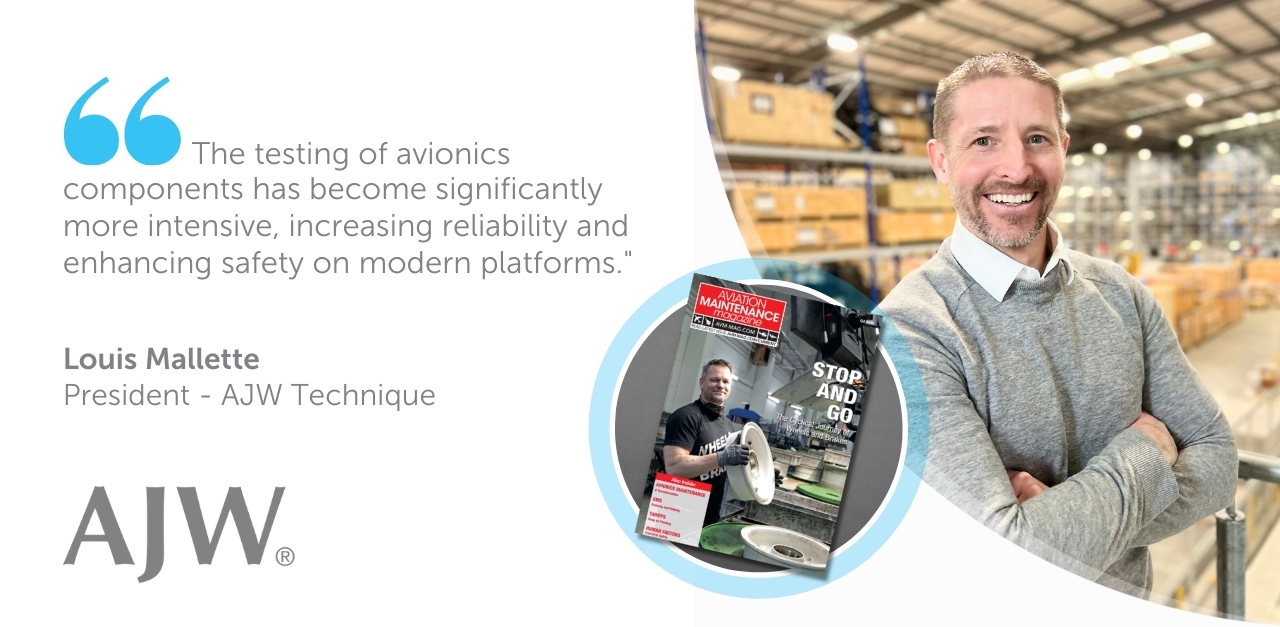

24/7 AOG Critical Response
Hotline![]() UK +44 1403 798888US +1 877 780 2008
UK +44 1403 798888US +1 877 780 2008
Our award winning global AOG service is manned 24 hours a day, 365 days a year.
Please call +44 1403 798888 or email aog@ajw-group.com.

2 Jul 2025

Avionics testing and repair are evolving rapidly thanks to emerging technologies like AI diagnostics, portable testing tools, and augmented reality. These innovations make maintenance more precise, predictive, and efficient, especially as aircraft become increasingly software driven. How are MROs harnessing these new tools in their operations? Aviation Maintenance Magazine investigates.
Reporting for Aviation Maintenance Magazine, Jim Romeo talks to experts from across the avionics MRO sector to find out how innovations in avionics repair and testing are transforming their operations.
To find out how these advancements are being integrated into avionics testing and repair processes, he talks to Louis Phillipe Mallette, President of AJW Technique – AJW Group’s global MRO facility based in Montreal, Canada.
Mallette shares that the primary, full functional testing of avionics components is performed using automated testing equipment. This method effectively identifies specific areas of a component that require attention or exhibit failures. There is, however, an evolution towards more sophisticated tools and techniques, he says.
“Avionics components have evolved significantly over the years, progressing from principally analogue electronics in the 1980s to the latest digital technologies today with increased use of microprocessors embedded in aeronautics," says Mallette.
“The testing of avionics components has become significantly more intensive, driven by new testing standards from aircraft manufacturers and equipment OEMs to increase reliability and enhance safety on modern platforms.”
Sharing an example, The AJW Technique President reveals that “The number of test points performed during a typical avionics unit test is now easily 10 to 100 times what it would have been 20 years ago.” This shows, says Mallette, that the performance of the automated test equipment has clearly improved over the years. “This, in conjunction with more efficient test software, has been accomplished without increasing the overall test time.”

What happens when a failure is identified? Mallette explains that once component failure is narrowed down to a specific circuit card, methods such as manual testing using an oscilloscope are used to verify the integrity of the circuit card assembly and to test individual devices on the card to identify the cause of failure.
“It goes without saying that the workshop environment in which we are testing is more stable than the actual environment on the aircraft, so, if necessary, we also adopt stress testing techniques,” he adds. “In these instances, we heat and/or cool the component whilst testing, and subject it to vibration. This helps identify latent failures as simple as cold solder joints, which do not show up in regular testing,” Mallette concludes.
Looking for an avionics repair and testing partner? Contact AJW Technique today.